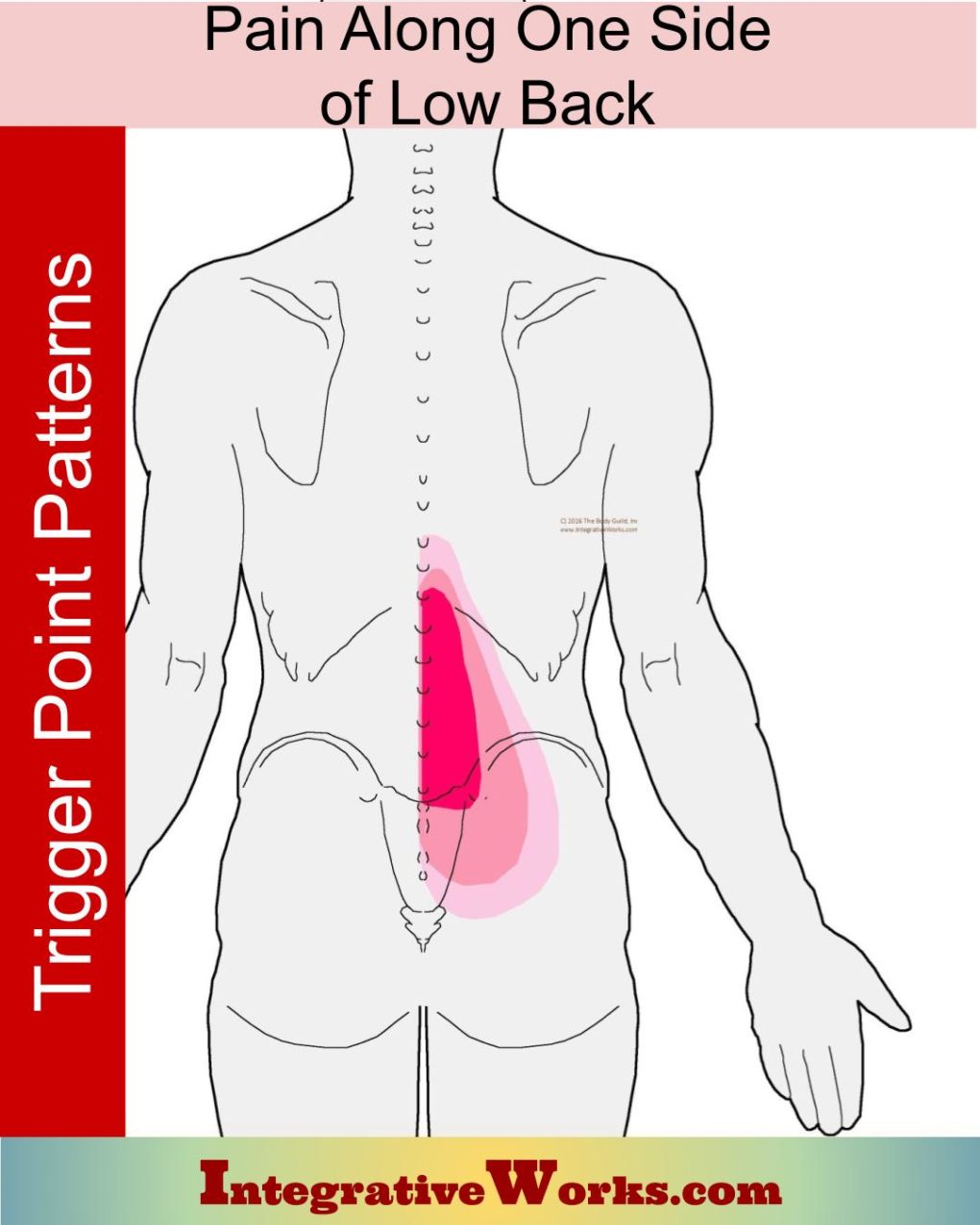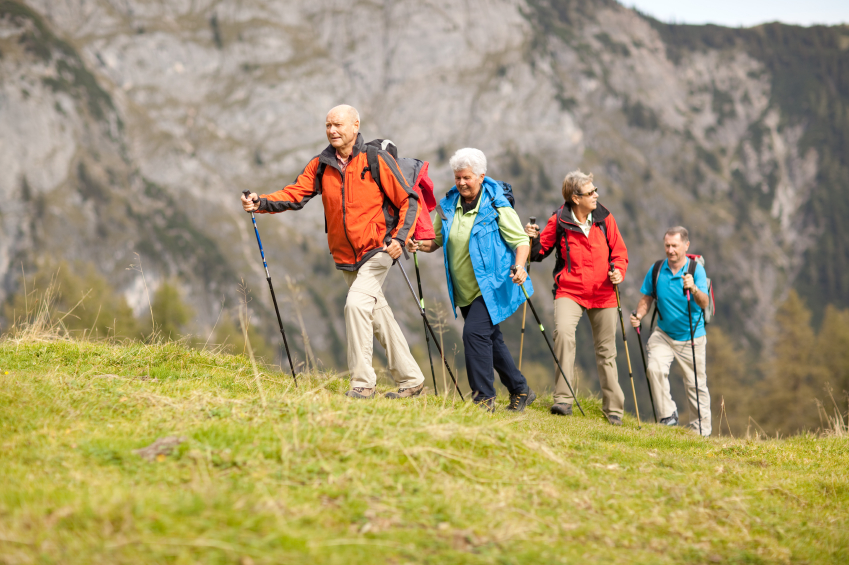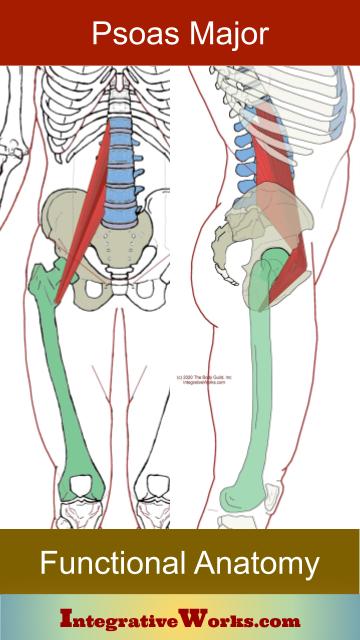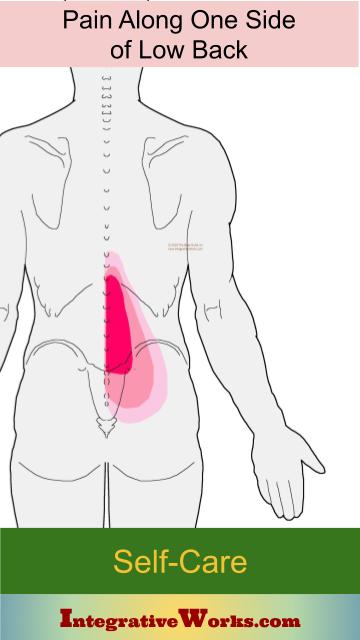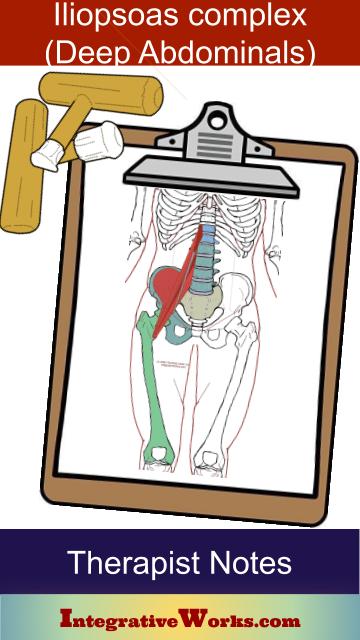Table of Contents
- How People Describe This Pain Pattern
- How You Activate and Intensify This Pain Pattern
- Self-Care – Getting Relief on Your Own
- Musculoskeletal Anatomy Behind Your Pain
- Therapy Notes for Massage and Bodywork
Want to skip ahead?
Here’s a link to my post about
getting relief on your own.
How People Describe This Pain Pattern
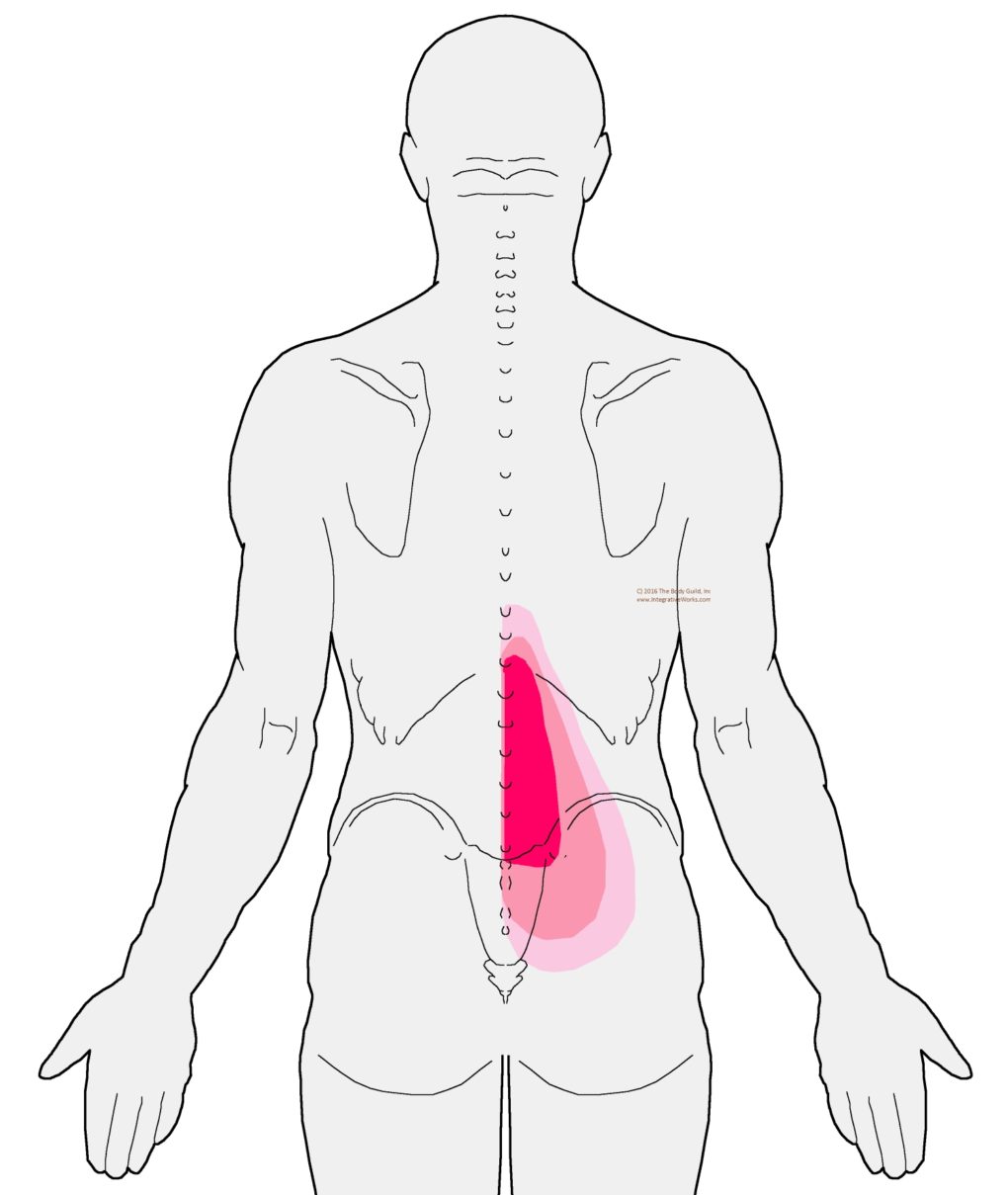
The patient with this pain runs their hand up and down along one side of their low back and says that it hurts there. They often say that they have pain along one side of the low back when they get up from sleep, after a drive, or some other activity where the hip flexes for extended periods. When this trigger point becomes more active, they complain of pain when walking.
Sitting may offer them relief for short periods, but they often complain when they are driving for long periods. They are stiff and slow to rise after long periods of sitting.
They often seek relief by “moving around.” One client complained about this to get out of jury duty. They may also get relief by putting a pillow under their legs when sleeping on their back.
They may sometimes complain of a “twisted hip” or that their “back is crooked” or they have “scoliosis in their low back.” One side of their low back is often notably flatter than the other side.
This muscle surrounds or weaves with the nerves of the digestive tract, and they may also complain about digestive problems.
How You Activate and Intensify This Pain Pattern
People primarily complain of getting this pain when chronically flexed for long periods. As mentioned above, pain along the low back gets worse after sleeping, driving, sitting in conferences, etc.
It is also bothered by flexing the hip repeatedly. Sit-ups and leg lifts usually aggravate this. Missionary style sex, climbing stairs, and walking uphill will also increase trigger point activity.
This can get aggravated when bracing oneself on a jet-ski or amusement park ride. One client aggravated this by reaching across a table to cubby-holes while working on a craft project. These activities, by the way, are more likely to aggravate the quadratus lumborum because they have some movement. This pain pattern tends to be more activated by stillness.
The Musculoskeletal Anatomy Behind Your Pain
Musculoskeletal Anatomy
Psoas Major
This muscle is seldom illustrated to show both sections, which attach to different vertebrae and wedge the iliohypogastric complex between them. Learn more in this post about psoas major.
Getting Relief on Your Own
Clinically Proven
Self-Care Strategies
This post has strategies for getting relief on your own. Explore how to change your activities, stretch, ice, and more to relieve the pain associated with this trigger point.
Therapy Notes for Massage and Bodywork
Better Bodywork
Through Shared Expertise
This post has techniques, tips, treatment routines, and anatomy illustrations to improve the bodyworker’s approach.
Support Integrative Works to
stay independent
and produce great content.
You can subscribe to our community on Patreon. You will get links to free content and access to exclusive content not seen on this site. In addition, we will be posting anatomy illustrations, treatment notes, and sections from our manuals not found on this site. Thank you so much for being so supportive.
Cranio Cradle Cup
This mug has classic, colorful illustrations of the craniosacral system and vault hold #3. It makes a great gift and conversation piece.
Tony Preston has a practice in Atlanta, Georgia, where he sees clients. He has written materials and instructed classes since the mid-90s. This includes anatomy, trigger points, cranial, and neuromuscular.
Question? Comment? Typo?
integrativeworks@gmail.com
Follow us on Instagram

*This site is undergoing significant changes. We are reformatting and expanding the posts to make them easier to read. The result will also be more accessible and include more patterns with better self-care. Meanwhile, there may be formatting, content presentation, and readability inconsistencies. Until we get older posts updated, please excuse our mess.

